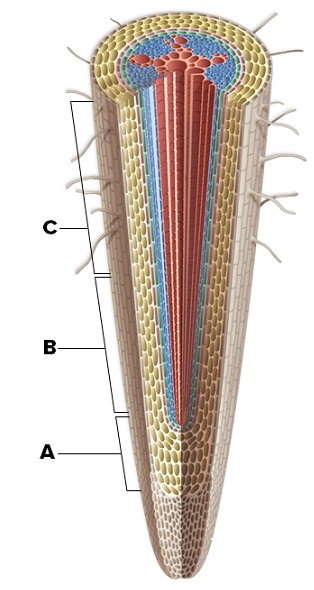Identify the labeled zones and briefly state what occurs in each region.  A. ________B. ________C. ________
A. ________B. ________C. ________
What will be an ideal response?
A. Zone of Cell Division: There is a high level of mitotic division in this zone. The primary meristems in this zone are continuously providing cells to the zone of elongation.
B. Zone of Elongation: In this region, cells lengthen as they begin to differentiate.
C. Zone of Maturation: This region contains fully differentiated cells and is recognizable by the presence of root hairs.
You might also like to view...
Simberloff and Wilson carried out a famous experiment to study the recolonization by arthropods of small mangrove by islands after the islands were fumigated. One of their findings was
A. The islands never recovered to their pre-fumigation levels of arthropod species richness. B. Species turnover was high following recolonization. C. Recolonization rates were identical on all of the islands regardless of distance to the mainland. D. Arthropod species richness on the islands changed little following recolonization.
Most of an apple fruit is derived from the ____
a. receptacle b. ovary c. ovule d. endosperm e. cotyledons
A basal body is most closely related to a:
a. ribosome. b. thylakoid. c. centriole. d. centrosome. e. lysosome
Fever, fatigue, loss of appetite, and a yellow color of the sclera and skin, without hemorrhaging or kidney damage, are typically observed with
A. gastroenteritis. B. dengue fever. C. hepatitis. D. rubella. E. yellow fever.